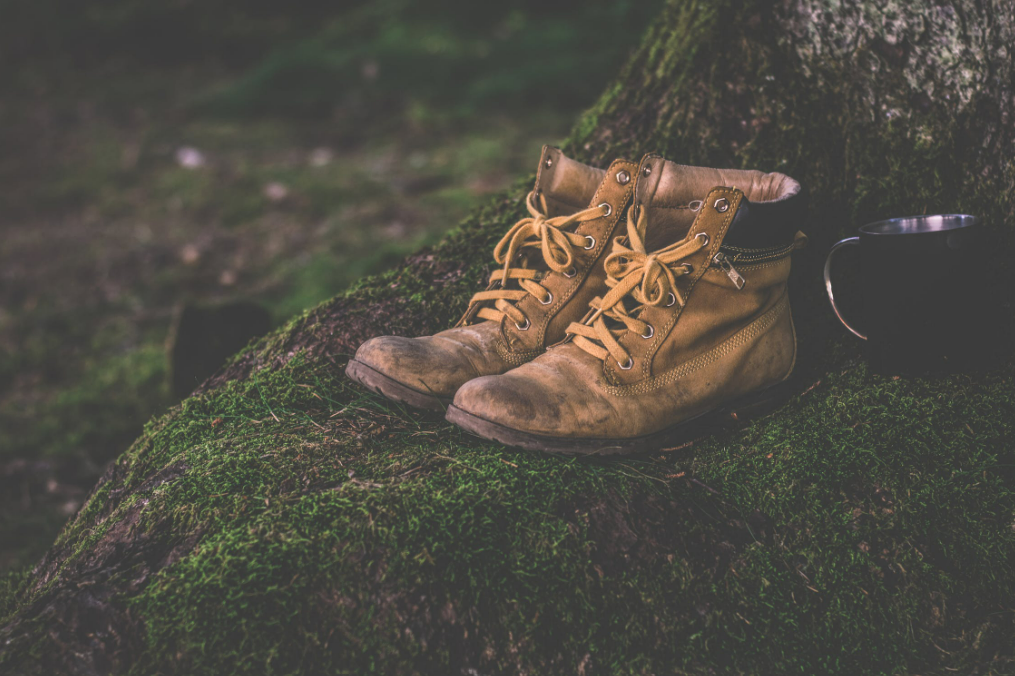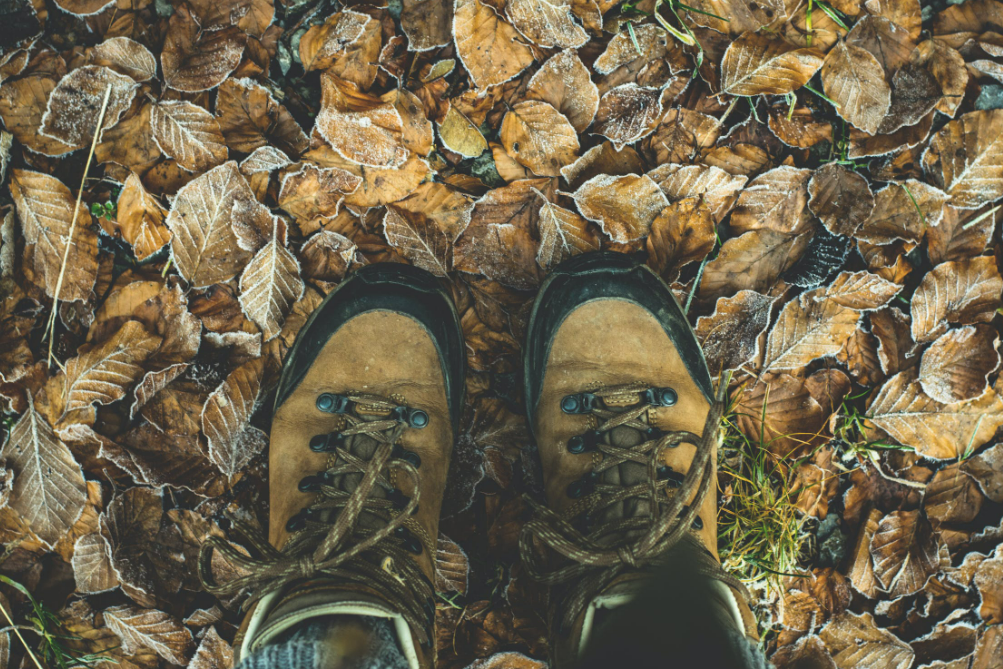If you are frequently going out on trips and long hikes, you will eventually run into an all too familiar problem- worn-out boots and need to replace hiking boots. While it’s completely natural and expected, it can leave you wondering if there’s something you could have done to know when to replace them, or better yet – prolong their lifespan.
Hiking boots are essential hiking gear- and while you can certainly go without protein bars, torch lights, and fancy equipment, you cannot make it without a good pair of hiking boots. Finding the boots that fit your feet well can be hard, so once you’ve gotten familiar with your favorite pair of boots, the thought of parting with them and having to replace them can be a sad ordeal.
Well-made boots that are crafted with durable materials will last significantly longer and you may be able to repair and use them for many more months, sometimes you’re just out of luck and you’ll have to pick a new pair of hiking boots.
In this short guide, we take a look at the most common signs your boots are getting old and how to know if it’s time to replace your hiking boots.
How Often To Replace Hiking Boots?
If you take good care of your equipment, you will definitely have a great experience when you’re hiking. But eventually, your hiking boots will wear down and you will need to replace them.
Most boots will be good for 600 – 1200 miles but this can vary depending on how rugged the terrain is, how you’ve used your boots and many other factors. Even if they look quite new, if your boots are causing you discomfort and noticeable pain, you should keep your comfort and safety above everything else and let them go. While shopping for new boots, you should make sure that the new ones fit you nicely, are comfortable to wear, and provide good ankle support.
Though hiking boots can last for many years, you should consider replacing your pair of boots if you see the following signs:
Visible Damage
All shoes look worn with time and the coloration and fabric will look aged. The easiest way to tell if your boots are damaged is to clean them first- get rid of any dirt or grime attached to your boots, and once they’re thoroughly cleaned, you should be able to see the damage (if any) on the fabric and sole of your boots.
If your boots look like they’re peeling off, or the leather on them seems to be rotting, it’s quite clear that the boot is near the end of its lifespan. Other less obvious signs of physical damage on your boots can be: damaged loops (the part that holds your shoe laces), worn ankle support, damaged heels, holes or openings or torn rims, a separated upper portion from the lower sole, and crinkled or cracked mid-sole section.
Pressing the toe area of your boot to check if it’s still firm is also a good way to tell if the boot needs replacing. Most hiking boots do stay in good shape for a long time. If your boot is losing its shape or the toe area is soft, it could mean that it’s unable to provide the support and stability needed for your feet and it might be time to get a new pair.
Depending on the extent of damage, your boot might be irreparable- you should check with a repair shop before attempting to do any repairs just to be sure that you aren’t furthering damage by servicing your boots inappropriately.
Loose/ Worn Stitches
If you’ve got casual shoes, you may have noticed that worn-out stitches don’t really mean much. You can probably just glue/ sew it back and still use it for a couple more months even if it seems like the stitches are loose.
This simply isn’t the case for most hiking boots. Since hiking boots are made tough and rugged in order to protect your feet on rough tracks, loose stitches can mean your boots are no longer waterproof and won’t function as well. Sometimes, repair shops will be able to restore your boots to an almost-new condition but in the worst case, you will have to shop for a new year.
Boot Keeps Getting Loose/ Damage To Eyelets
The most common culprit of loose boots is bad shoe laces. If your shoelaces have gotten old and damaged, you should replace them with new ones.
It’s never a fun experience to hike outdoors with your laces untied, so it’s always a good idea to replace your laces before they break. The good thing is- you don’t have to replace your boots just yet if only your laces are showing signs of wear.
The part where you tie your laces through are called eyelets- these parts hold the laces together, and also help tighten your boots on your feet. You may also find lacing loops instead, but whichever the mechanism to secure the laces in place – if your boots feel loose, it’s a good idea to check the eyelets.
The portion above the vamp- with the lacing D-ring and eyelets may be coming off due to years of use- or the leather around it may be giving up. If this is the case, you risk having an unstable ankle support system that can twist your ankle and cause nasty sprains with the possibility of ligament damage. Definitely not fun!
Pain And Discomfort In Your Feet
One of the most common issues that long-term hikers face is knee-related problems. It’s also common in new runners and does take a lot of time to heal. But that aside, you might be experiencing some form of discomfort in your feet if your boots are nearing the end of their lifespan.
When you are wearing a small boot, you can immediately tell if it’s not for you but most of the time, whether or not your boot is causing you issues can be hard to tell. If your ankle is twisting in odd ways due to worn tread or damaged in-sole, or you’re seeing blisters on your feet even after short hikes, it might be time to change your boots.
If your upper part of the boot is fine but it’s just the in-soles that have gotten worn down, you just need to get new in-soles and put them inside your boots. It is very important to have good in-soles as those provide cushioning and protection to your feet.
Personally, I would never suggest you hold on to old hiking boots if you can afford new ones, especially after the 1000-mile mark. This isn’t because they would no longer look stylish- it’s actually because they might cause you all sorts of discomfort and can lead to permanent injury in your feet.
Have Your Boots Lost Traction?
As your boots get older, you may have noticed that they’ve lost traction and tend to slip on wet surfaces way more often. This is caused due to the tread wearing off- and the soles may be starting to look like they’re smooth soles.
If you take your boots to a cobbler, you should be able to get them retreated or even resoled in most cases. But the thing is, the trademarks on a boot usually don’t fade away that quickly- and by the time this happens, the boots have likely seen thousands of miles and are ready to be replaced.
Can You Repair Your Hiking Boots?
Unless you’re somebody who already knows a fair bit about soles and working with leather boots, chances are- you aren’t going to find it rewarding to spend a lot of time learning about and trying to fix your hiking boots. Then there’s also the fact that you will need to get the necessary tools in order to make it work. It simply isn’t going to be worth your time.
That said, there are a couple of situations where trying to repair your boots at home is actually easy and recommended. If your boot is missing an eyelet or a lace loop, you can easily fix this by getting a new one and fixing it into place.
Similarly, if your boots seem like they are peeling off (soles are being delaminated) but the rest of the materials are intact, you will be able to fix it with some glue. Synthetic boots are often trickier to repair than leather boots, and unless you have that kind of experience under your boot, you are unlikely to do as good a job as a seasoned cobbler.
It’s always a good idea to ask a cobbler to do the repairs as they are definitely better at it. But doing so can and will void any warranty on the hiking boots, so you’ll want to check with the manufacturer to see if they offer the services you are seeking.
If the damage isn’t too severe, the cobbler will be able to fix your boot in no time- but if the upper parts and the sole have peeled off completely, or the stitches have come off, or your cat had a field day with your boots, repair is going to be unlikely and you will probably have to decide on a new pair of boots.
Frequently Asked Questions
How long does a pair of hiking shoes last?
A good pair of hiking shoes should last anywhere from a few months to many years. On average, a decent hiking boot will last you for about 1000 miles- and around that time, your laces, lace loops, soles, treads, and stitches will begin to show wear and need replacing. It’s a good idea to replace your hiking boots well before you reach the 1000-mile mark as worn-out boots are not only uncomfortable and no longer waterproof but can also cause serious injuries to your feet while hiking.
Is it worth resoling hiking boots?
If your hiking boots are relatively new and haven’t seen much wear, it might be a good idea to resole them. If your uppers and mid-soles are still new, and the leather looks still shiny, or if your boots are still comfortable and serving their purpose, you don’t really need a new pair of boots. It can be costly to get new pair of boots, so if you believe that your existing pair is good enough to last a couple more months, you can try taking them to a cobbler’s shop for resoling.
How do I know if my hiking shoes are worn out?
The easiest way to tell if your hiking boots are worn out and need replacing is to check to see if there are visible signs of damage like faded treads, damaged lace loops, cracked midsoles or compression lines, or frayed leather surfaces. Similarly, if your boots are no longer waterproof or feel like they aren’t doing a good job at protecting your ankle, they might be causing discomfort to your feet.
Your boots might also feel loose and the in-soles may be cracking. Most hiking boots retain their shape for a long time but if your shoes no longer maintain their shape/ support, you may need to replace your hiking boots.
Conclusion
Hiking boots are cherished pieces of equipment essential to any hiker. You may not realize how much you’re in love with your current pair until you eventually diagnose your boots with a severe issue that cannot be fixed easily. Getting a new boot can fix these issues, and timely replacement can save you from nasty injuries.
Nobody likes having a sprained ankle while hiking, and replacing your worn-out books when they’re showing signs of needing replacement is a good way to care for your feet. Just take a good look at your boots and you should be able to tell if you need a new pair of boots.
If your boots are looking shabby (and you look like a poor homeless person), you might still be able to salvage them- just take them to a cobbler’s, ask him to fix your boots to the best of his ability, and if it’s still worth saving, you won’t have to get a new pair!




